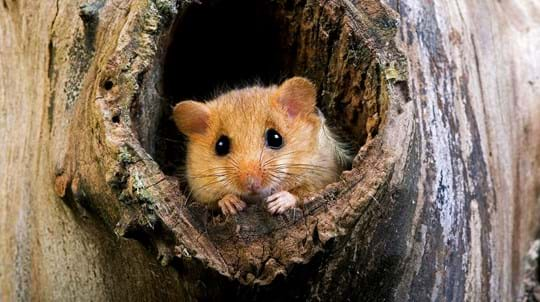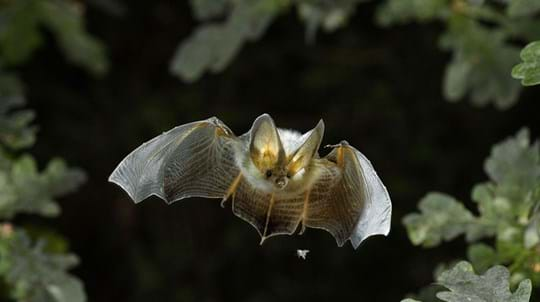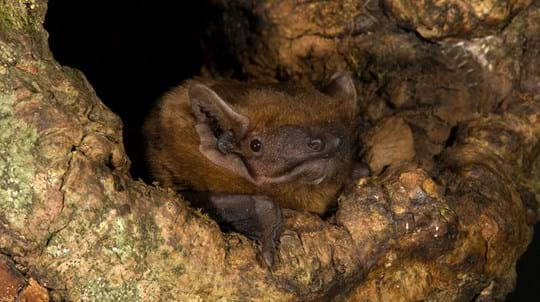
Credit: Marcos Veiga / Alamy Stock Photo
Hibernation
Serotine bats hibernate during the winter, taking shelter in old buildings. They have been discovered sleeping in disused chimneys and inside walls.
One of the largest British bats, the serotine has a taste for beetles and other flying insects. Listen for the squeaking sound it makes just before emerging at dusk to hunt.
Common name: serotine bat
Scientific name: Eptesicus serotinus
Family: Vespertilionidae
Habitat: woodland, hedgerows, parkland, pastures
Diet: flies, moths, beetles
Predators: birds of prey
Origin: native
One of the largest bats in Britain, serotine bats measure 6-8cm in length and weigh between 15-35g. They have dark brown fur and a dark brown or black face, wings and ears. The fur is a paler yellow-brown on the underside and the ears are large and pointed. Juveniles have darker fur than adults.
Flies, moths and beetles – particularly chafers and dung beetles – make up the serotine bat’s diet. It is capable of both catching insects in flight and plucking them from the ground or on vegetation. Serotines are also known to feed near lamp posts, where moths have been attracted to the light.
The breeding season for serotine bats is during the autumn. Females will then begin to form maternity colonies in old buildings and churches the following May. A single pup is usually born in July and is carried by the mother for its first few days of life. It will be independent at roughly six weeks of age.

Credit: Marcos Veiga / Alamy Stock Photo
Serotine bats hibernate during the winter, taking shelter in old buildings. They have been discovered sleeping in disused chimneys and inside walls.
These bats live in open woodland, hedgerows, parkland, pastures and can also be found around towns and villages. They only occur in the southern half of the UK, although their range appears to be expanding.
Serotine bats tend to emerge earlier in the evening than most of our other bat species.
Visit woodland just before dusk for your best chance of spotting the serotine bat. Listen out for the squeaky calls they make before they emerge to hunt.
The population status of serotine bats is currently unknown. However, the species is vulnerable to a number of threats that affect bats in general. These include a loss of suitable roosting and hibernation sites and a decline in their insect prey.

Trees woods and wildlife
Trees and woods provide a stable habitat and food supply for many mammals. What will you spot?

Trees woods and wildlife
Discover why woods and trees are important to the roosting, foraging and navigation needs of bats.

Blog
Joe Bates • 03 Dec 2018

Woodland wildlife is fading before our eyes. Please support our appeal to save rare and threatened species.
Donate now